AI agents examples: 18 real-world use cases for businesses
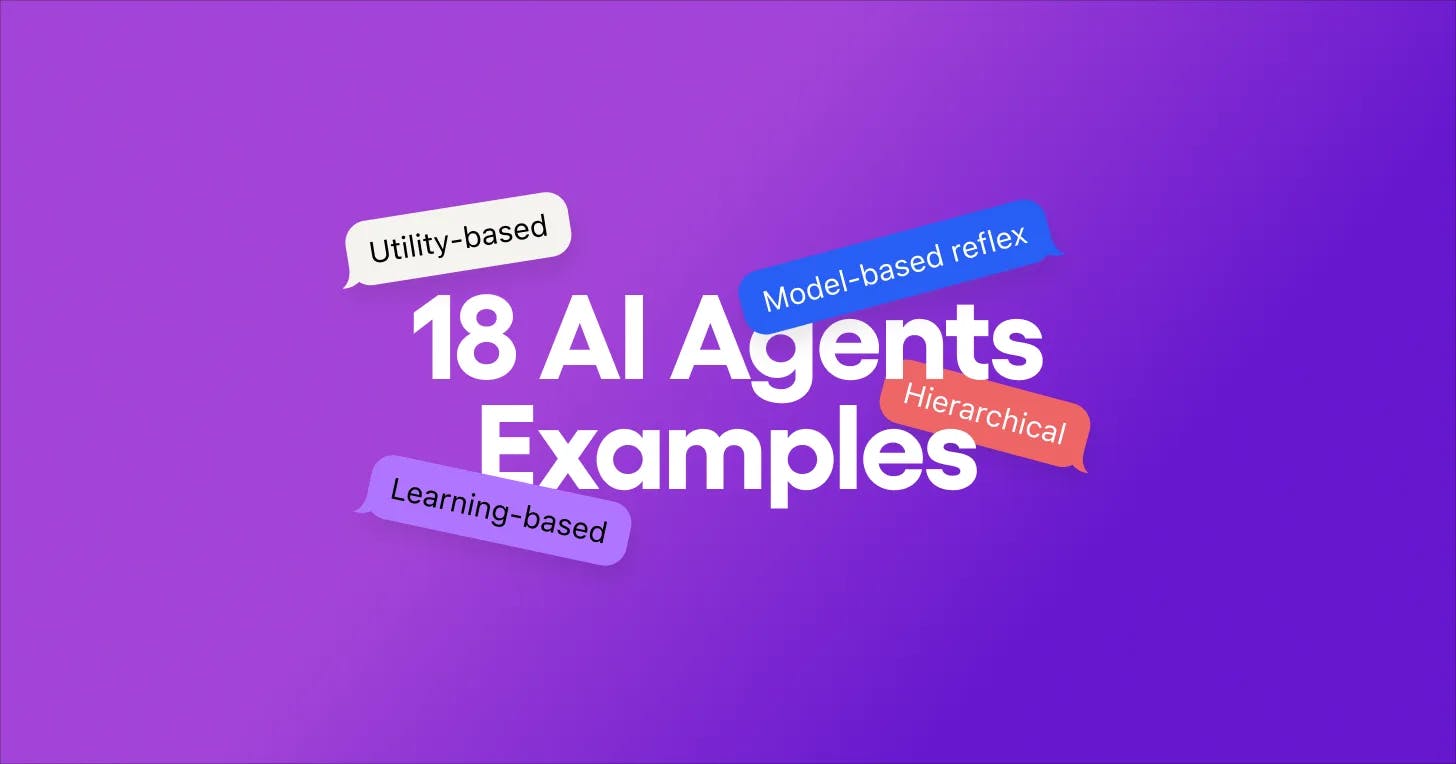
AI agents are redefining what’s possible in enterprise automation, setting a new standard in everything from customer service to marketing to cybersecurity.
Unlike generative AI tools that simply respond to users and execute basic tasks, AI agents have a degree of autonomy. They can perceive their environment, reason, make decisions, and take action toward the goals set for them across business systems—even learn and adapt over time—all with minimal human intervention.
According to a recent survey, over half of companies expect agentic AI to automate or accelerate 26% to 50% of their current workloads, unlocking major gains in operational efficiency, productivity, and cost savings at scale. In short, they're the next generation of AI workflow automation for business.
For business leaders, understanding how AI agents can be used and how to build AI agents for their specific use case is a key step in safe and effective adoption. In this guide, you'll learn:
What are AI agents?
How do AI agents work
Main types of AI agents
18 AI agents examples
How to start building AI agents

Reinvent CX with AI agents
18 AI agents examples
AI agents can be designed at various levels of complexity to suit specific use cases. This is because their modular architecture is made up of modules for perception, reasoning, autonomous action, and memory—unlike previous AI that rely on rigid, predefined instructions alone.
At a basic level, this modular architecture allows AI agents to engage in autonomous loops of simple task execution while retaining context across interactions through their memory module. More advanced designs expand these capabilities, enabling AI agents to excel in complex, evolving environments that require deeper decision-making and continuous adaptation.
Now let’s look at how different AI agent architectures translate to specific use cases, organized by agent type:
Goal-based AI agents examples
Goal-based agents evaluate the potential outcomes of different options and select the one that best moves them toward their goal. They’re useful in dynamic environments where multiple paths to success are possible.
1. Proactive AI agents for customer service
Proactive customer service agents initiate contact with users based on real-time triggers such as in-app behavior, system events, or historical data. Instead of waiting for the customer to reach out, the agent identifies opportunities to provide support or information in advance.
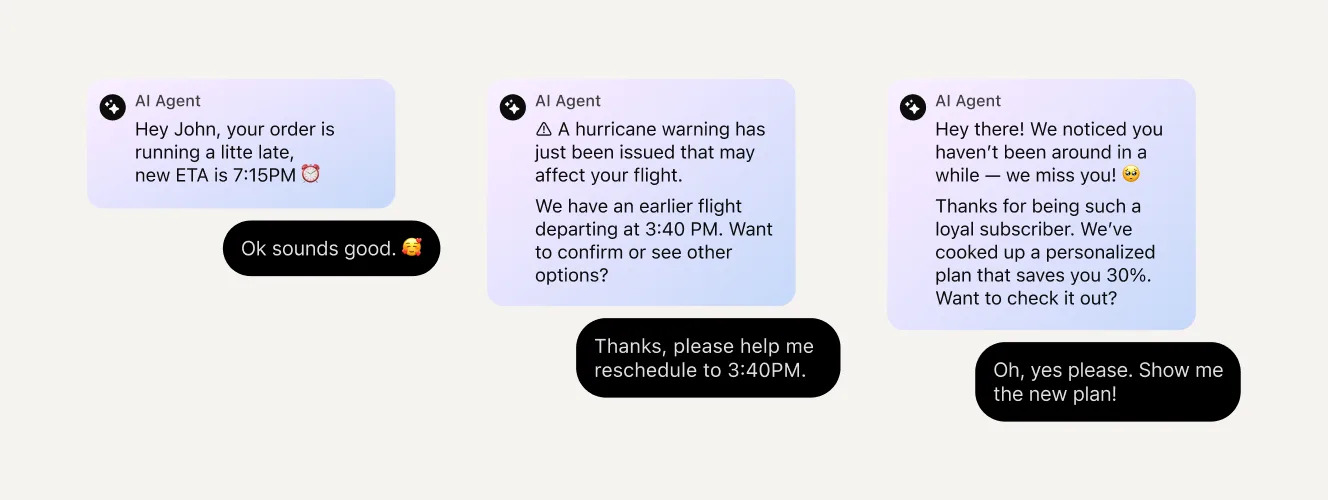
2. AI scheduling assistants in enterprise environments
When coordinating meetings across large teams, a goal-based scheduling AI agent considers everyone's availability, time zones, and meeting preferences. Its goal is to find a time slot that works for all participants. Instead of picking the first available time, it evaluates several options and selects the one that meets the scheduling goal most effectively.
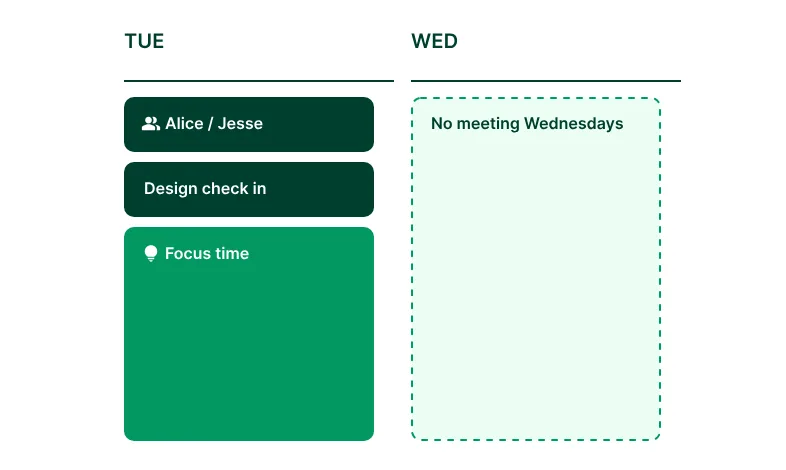
3. Autonomous delivery drones in logistics
A delivery drone doesn’t just follow a fixed path. Its goal is to deliver the package quickly and safely. If weather conditions or obstacles appear, the drone recalculates its route and adjusts its flight path in real time to achieve its delivery goal with minimal delay.


Anywhere, anytime AI customer support
Model-based reflex AI agents examples
Model-based reflex agents use an internal model of their environment to make decisions. Rather than reacting only to immediate inputs, these agents reference stored knowledge about how the system typically behaves. This allows them to infer what’s happening and take more informed, context-aware actions.
4. Omnichannel AI agents for customer service
AI agents interoperate across business systems, enabling them to meet customers across support channels immediately without losing context from previous interactions. In other words, these omnipresent AI agents can remember individual customers, their preferences, and past interactions—to deliver one truly seamless, personalized experience that spans channels.
Say a customer contacts support via a website chatbot with a vague message like my “My order was wrong.” A model-based AI agent can refer to order history, item data, and recent issue reports to infer what went wrong. It might recognize that there was an inventory substitution or delivery delay at that location, intuit from present context and model training data what the ideal response is, and respond instantly—even if the conversation has shifted to a channel like SMS or email.
The clip above shows how Sendbird’s AI customer service agents apply internal models to understand vague or incomplete messages, delivering context-aware support across mobile, web, SMS, email, and social channels.
Learn more: How to build an AI agent: 8 key steps
5. Warehouse robots in inventory management
In large fulfillment centers, robots equipped with sensors and an internal map of the warehouse can continue navigating even when a sensor is momentarily blocked or inaccurate. For example, if a barcode is unreadable, the robot can estimate its location based on its internal model of the environment and proceed with the task.

6. Cybersecurity anomaly detection tools
Some intrusion detection systems use model-based reflex logic to detect suspicious behavior. If a login request comes from an unusual location but normal credentials are used, the agent uses a model of standard login patterns to decide whether to block access or trigger additional verification, even if the immediate data doesn’t show a clear threat.
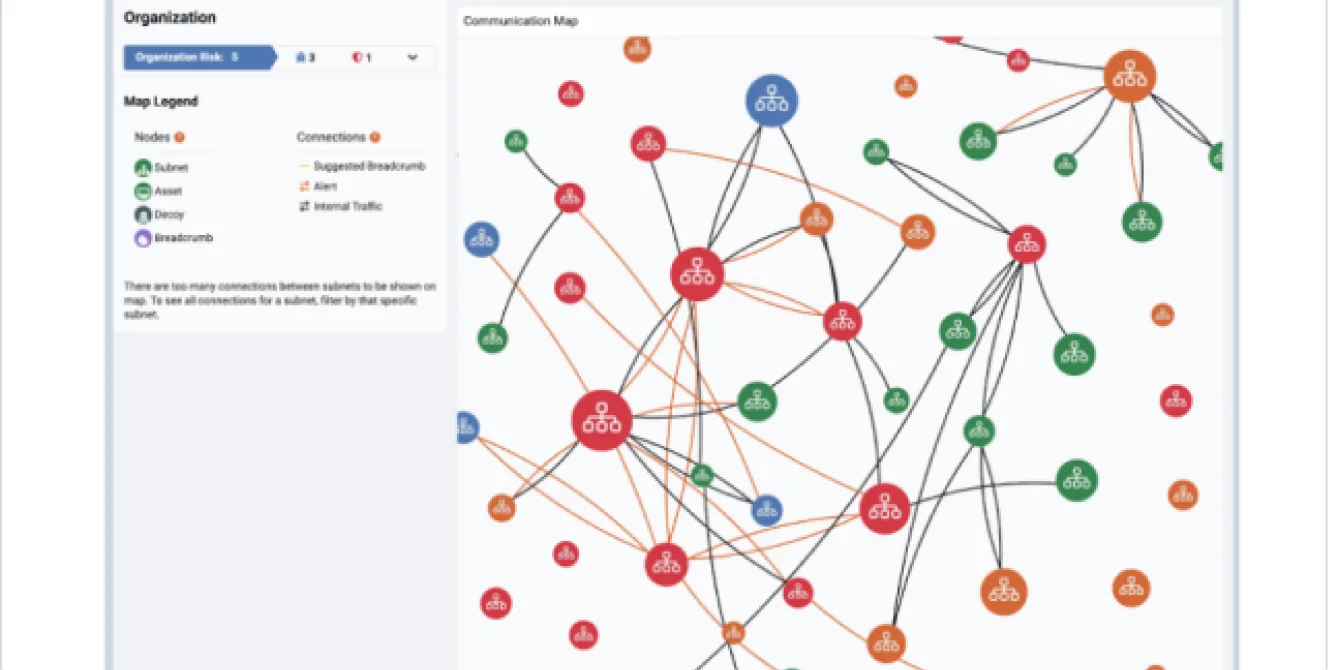
Simple reflex AI agents examples
Simple reflex agents operate based on immediate conditions in their environment. They don't remember past interactions or predict future outcomes. Instead, they follow basic if-then rules to determine what action to take at any given moment. While limited in flexibility, they are useful in tightly controlled or fully observable settings.
7. Network monitoring alerts in IT operations
In enterprise IT systems, simple reflex agents monitor server metrics like CPU usage or network latency. If a value exceeds a preset threshold (e.g., CPU > 90%), the system sends an alert or triggers auto-scaling.
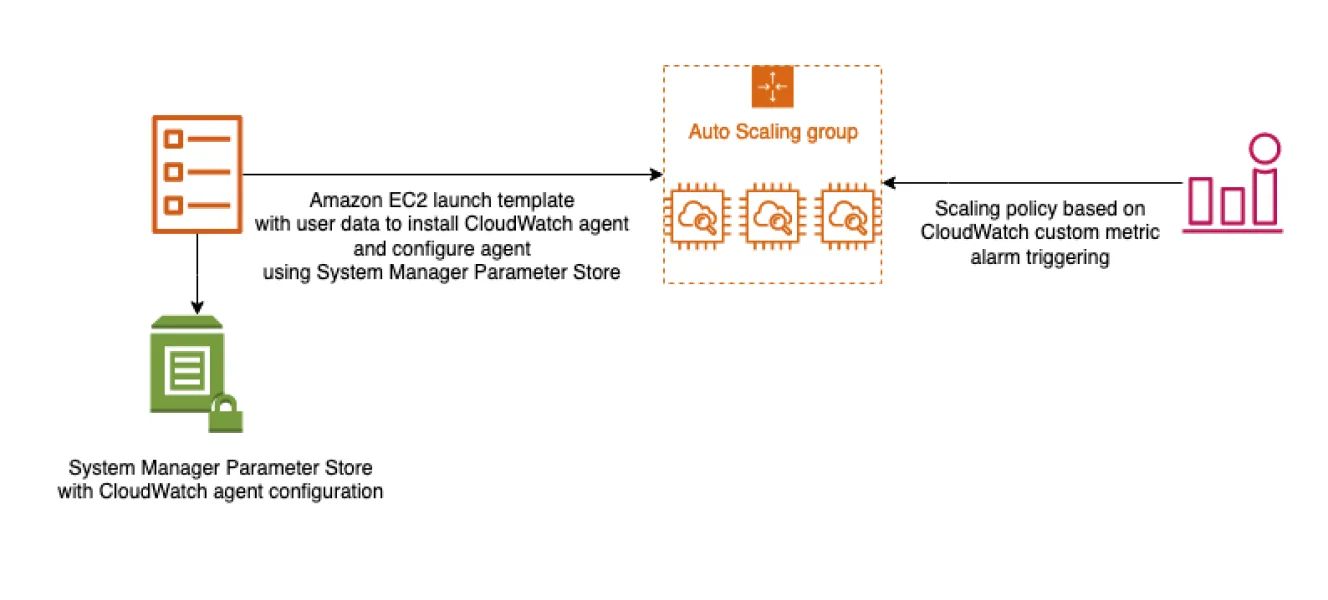
8. Email spam filters in customer communications
Many first-line spam detection tools work on simple pattern-matching. If an email contains certain keywords or formatting (e.g., “urgent wire transfer” + suspicious domain), it is flagged as spam.
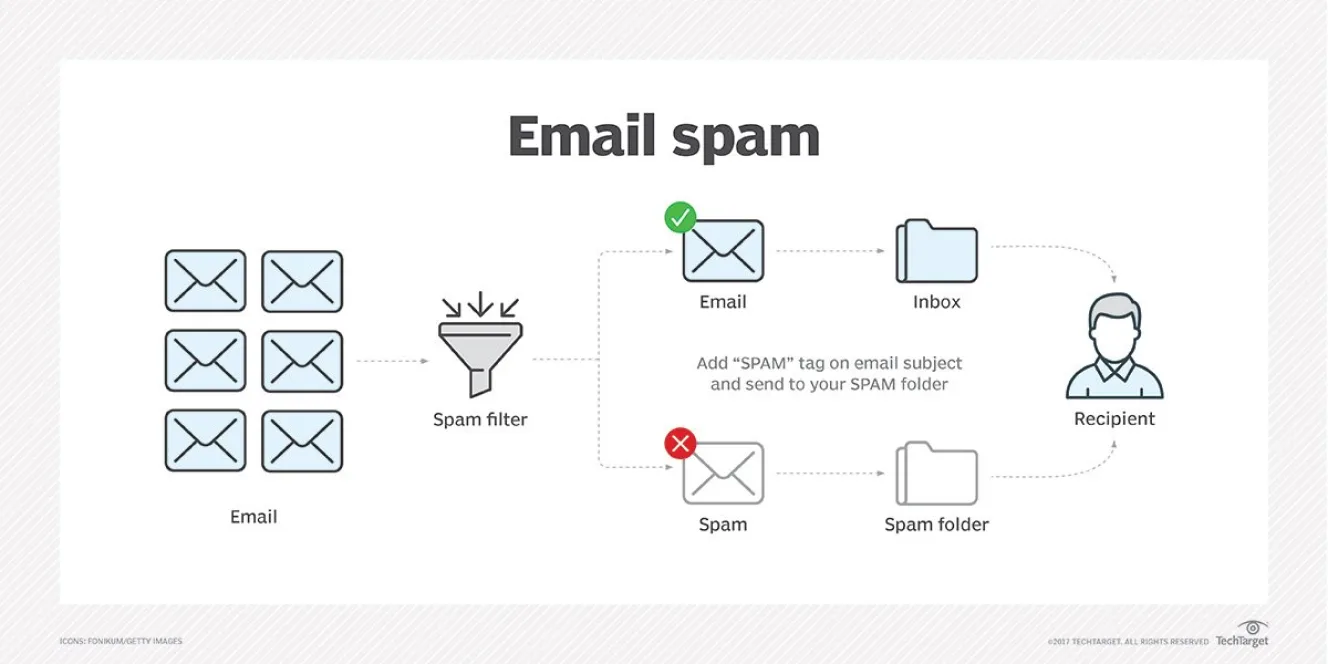
9. Retail shelf security sensors
In some retail stores, shelves are equipped with sensors that trigger alerts when items are removed without a corresponding barcode scan. These simple reflex agents help reduce theft and inventory loss by responding instantly to unscanned product movements.
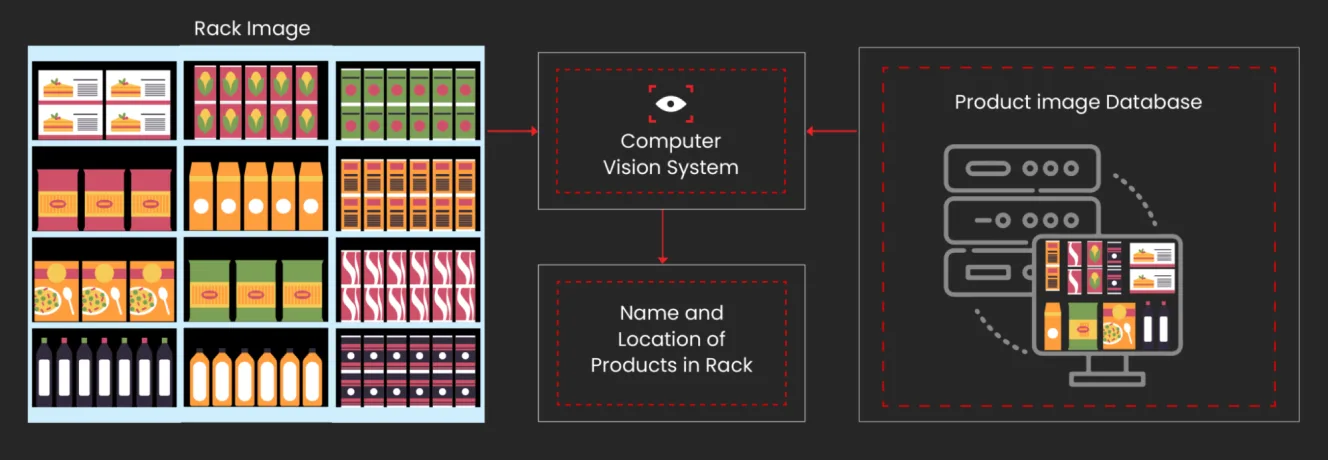
Learning-based AI agents examples
Learning agents improve their performance over time. They observe what works and what doesn’t in their environment, adjust their behavior, and store useful knowledge for future decisions. This makes them ideal for complex, changing environments where static logic isn't enough.
10. Personalized recommendation engines in e-commerce
Online retailers use learning agents to tailor product recommendations based on user behavior. By analyzing browsing history, purchase data, and customer feedback, the system refines its suggestions over time. As more interactions occur, the agent becomes better at predicting preferences.

11. AI-powered sales assistants
Learning agents help monitor successful interactions, closed deals, and customer responses in enterprise sales platforms. They adjust messaging strategies and prioritize outreach based on what has worked in the past with similar leads. Over time, the agent gets better at predicting which leads are most likely to convert and how to engage them.

12. Document processing agents in financial services
In financial services, learning agents process documents like invoices and loan applications. As they handle more files, they improve at extracting key data and flagging anomalies. With feedback from human reviewers, these agents refine their accuracy over time.
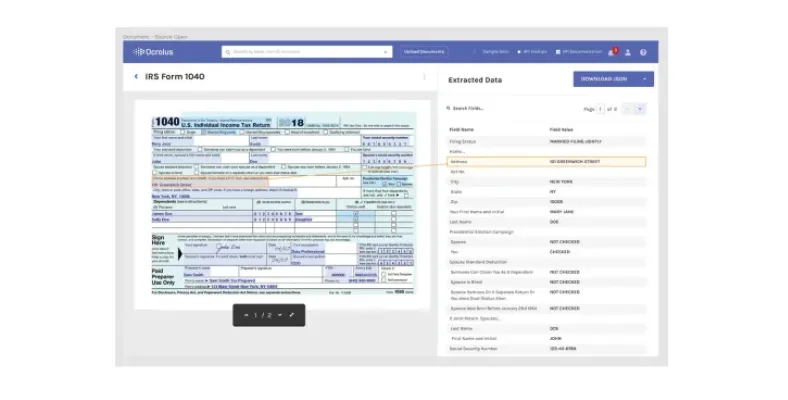

Delight customers with AI customer service
Utility-based AI agents examples
Utility-based agents assign a utility value to each possible outcome and select actions that maximize overall benefit. Utility can be defined by factors like speed, cost, user satisfaction, or risk. This approach allows them to make smarter trade-offs, especially in environments where multiple options can achieve the same goal but with varying consequences.
13. AI bidding systems in digital advertising
Digital ad platforms like Google Ads use utility-based agents to evaluate multiple bidding strategies for each ad placement. Rather than simply bidding the highest amount, the agent weighs factors such as cost, expected click-through rate, and conversion potential to choose the option that delivers the highest overall value.
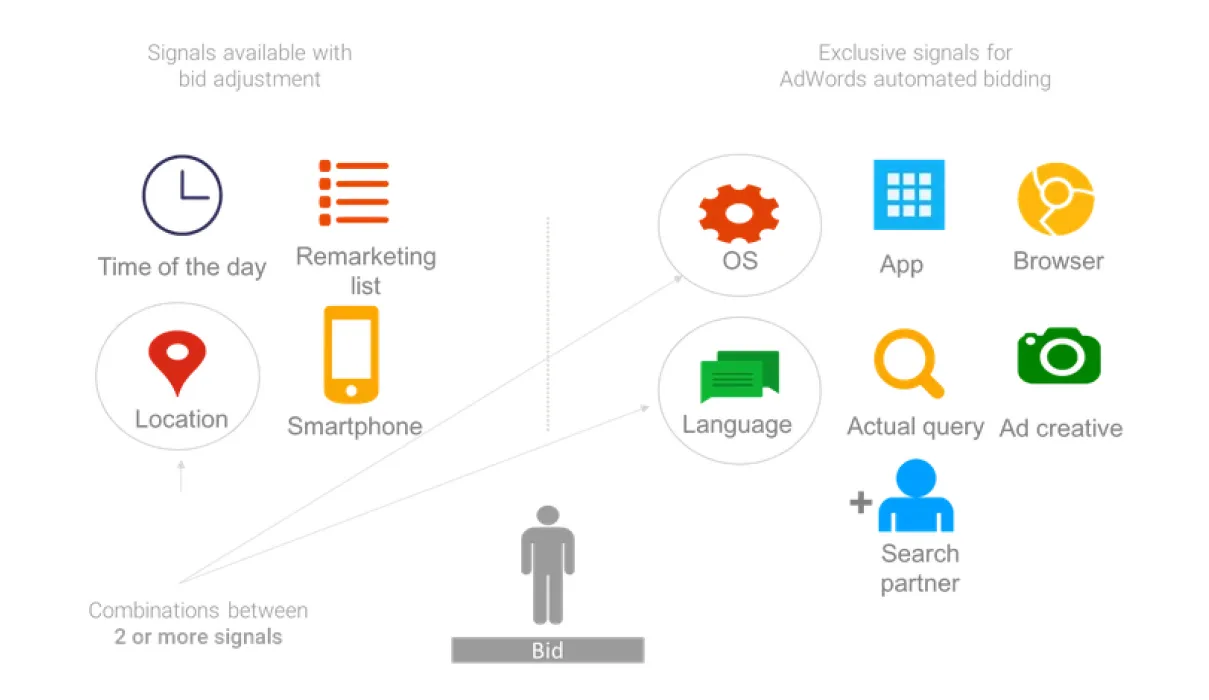
14. Smart pricing agents in e-commerce
Smart pricing agents adjust prices dynamically based on real-time signals like demand, inventory, timing, competitor rates, and customer behavior. Instead of setting static prices, the agent calculates which price point is most likely to maximize value.
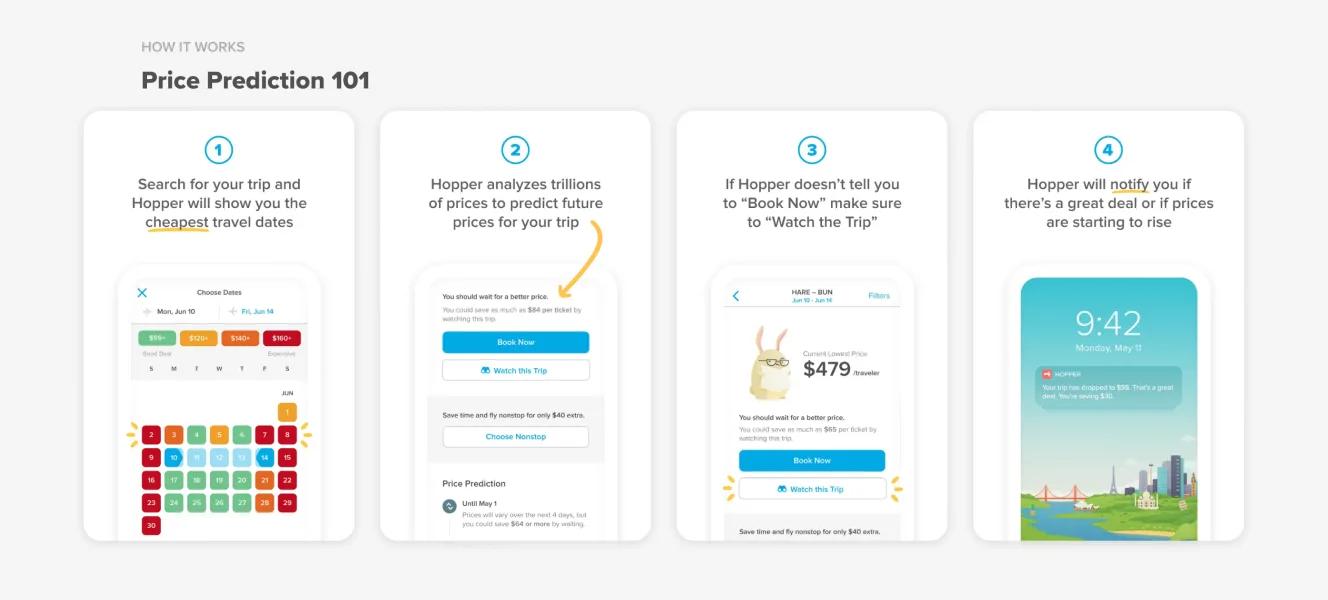
15. Customer support triage agents in healthcare tech
When patients submit support requests or inquiries, a utility-based agent prioritizes them based on urgency, patient status, and available resources. For example, it might fast-track a high-risk patient’s appointment request while placing a general inquiry in a lower priority queue.

Hierarchical AI agents examples
Hierarchical agents break complex tasks into smaller, more manageable sub-tasks, organizing decisions across multiple levels of abstraction. At the top level, the agent defines high-level goals or strategies. At lower levels, it executes specific actions that support those broader objectives.
16. AI workflow managers in enterprise automation
In large organizations, hierarchical agents can oversee end-to-end business processes like onboarding or procurement. The top-level agent sets the goal (e.g., “onboard new employee”), while sub-agents handle specific tasks such as account creation and compliance training.
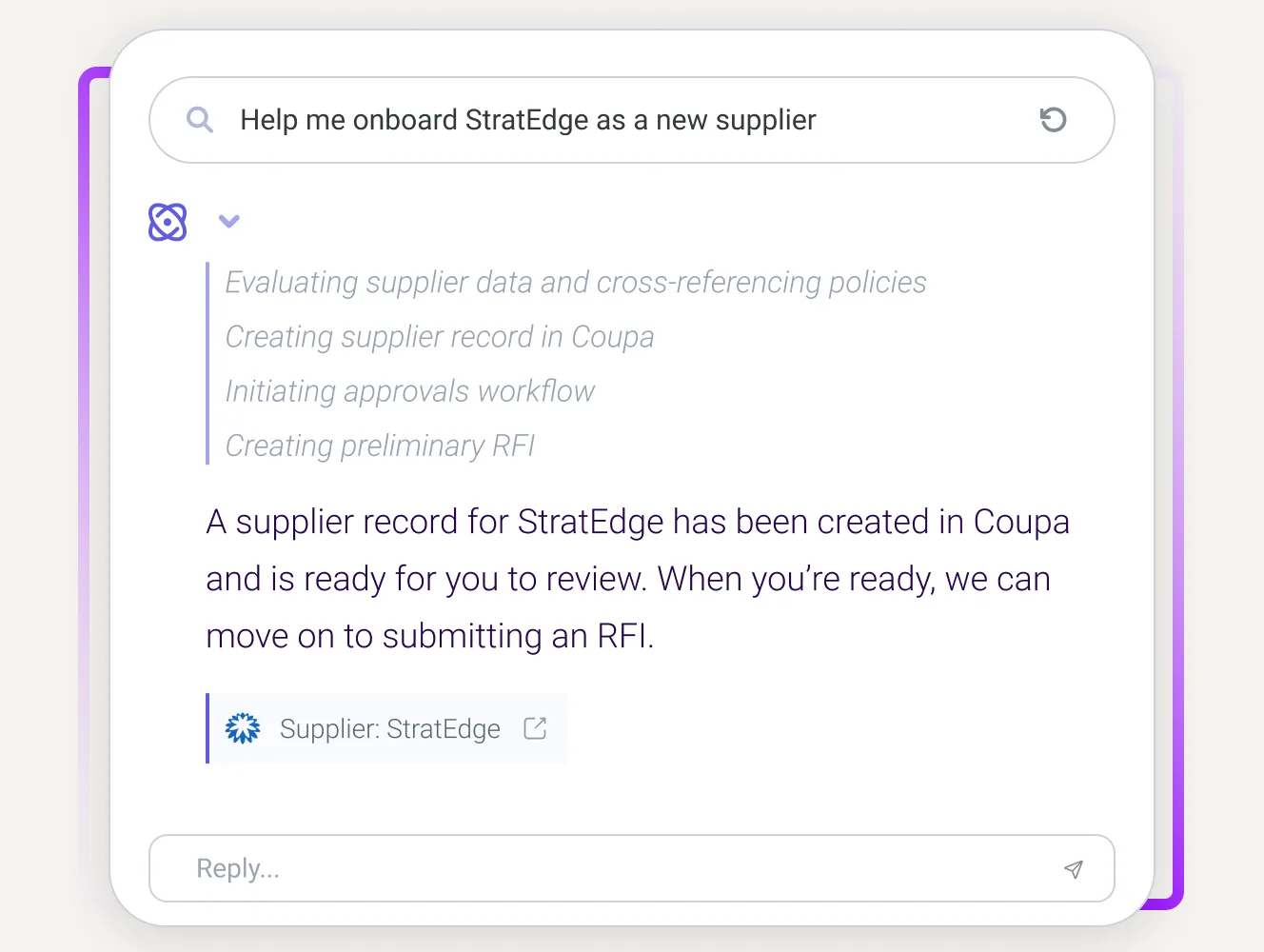
17. Autonomous vehicles in fleet management
A fleet of delivery vehicles may use a hierarchical agent to plan and execute routes. The top-level agent determines overall delivery priorities across the fleet, while individual vehicle-level agents manage local tasks like avoiding traffic or parking.
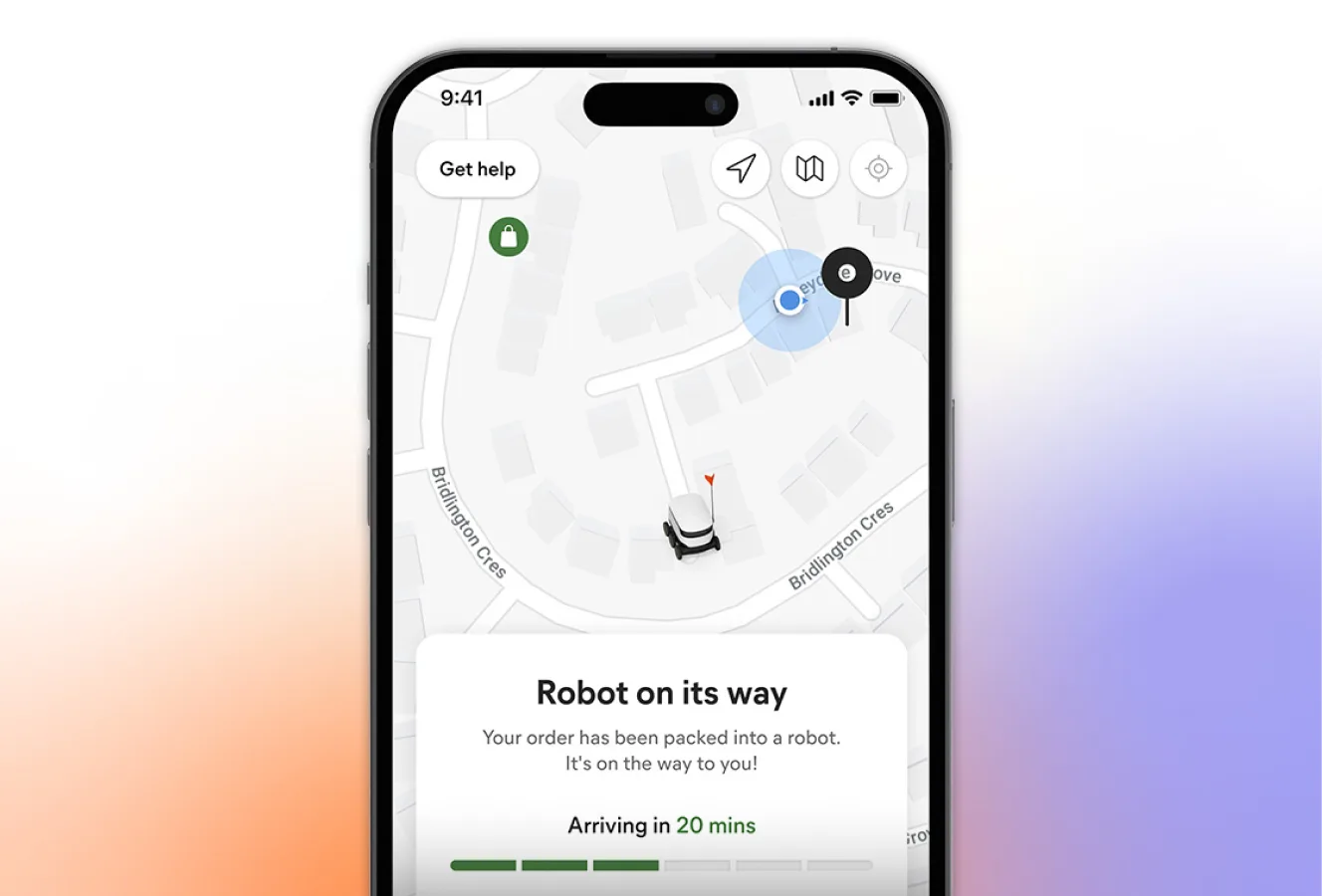
18. Multi-step marketing campaign agents
In marketing automation platforms, a hierarchical agent can manage a campaign goal (e.g., increase engagement). Sub-agents execute email sends, monitor response rates, and adjust messaging based on behavior. The top-level agent monitors performance and adapts the overall campaign strategy to maintain alignment with business objectives.
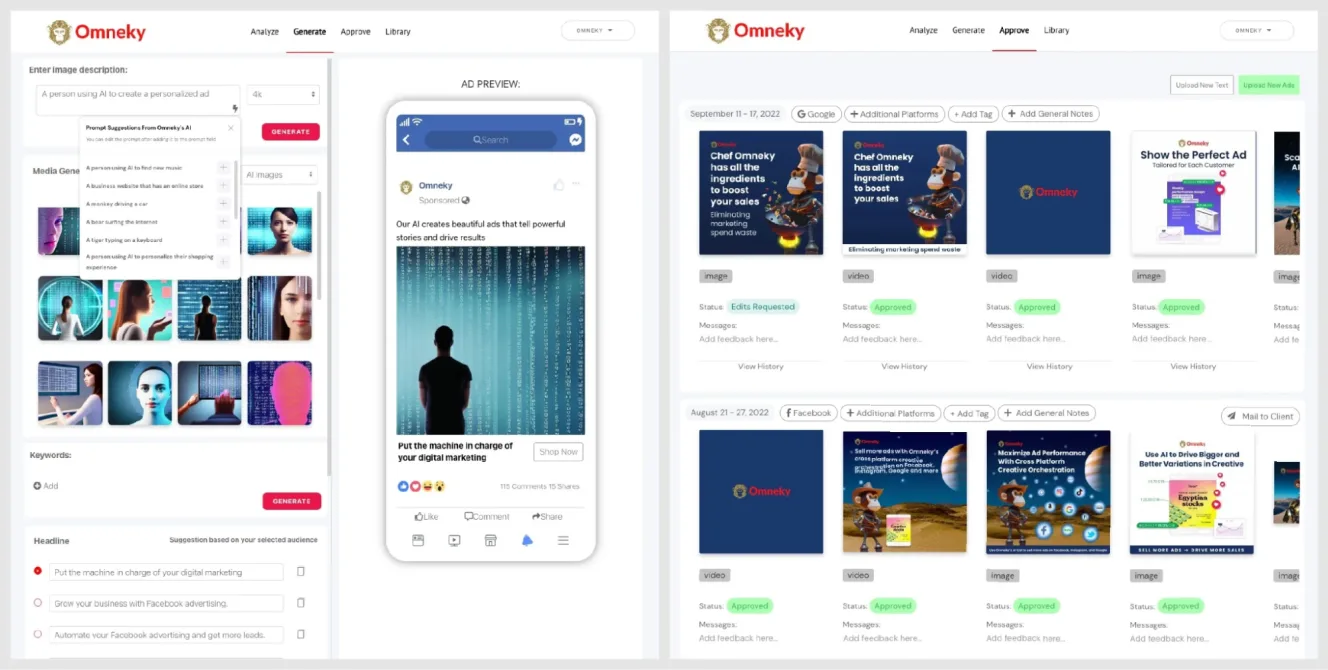

Leverage omnichannel AI for customer support
How to build AI agents for your unique business
Given the versatility of agentic AI technology, many companies are now turning to vertical AI agents—specialized systems built for particular industry use cases and workflows. After all, the most effective AI agents don't know everything about the whole world, they know everything about your specific business and workflows.
By feeding AI agents a diet of domain-specific training data, rather than a broad spectrum of generic information, agents can perform with greater accuracy, efficiency, and reliability in business-specific tasks and workflows than general-purpose tools.
AI agents can be made even more effective when orchestrated as part of a multi-agent system. This is when a team of specialist agents collaborate to achieve a larger, more complex goal across environments.
Building an AI agent to automate your unique workflows doesn’t have to be a huge lift. AI agents integrate seamlessly with existing systems and tools, while a growing set of AI agent builders make it fast and easy to create and deploy custom AI agents.
Sendbird’s AI agent platform, for instance, makes it fast and easy to create, test, and optimize AI agents for customer service, then deploy and scale them on trusted enterprise-grade infrastructure.
Contact our friendly team of AI experts to learn more.
Want to explore more about AI’s evolving role in business? These resources can help:











